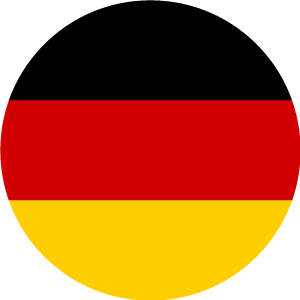Performance Evaluation of Smart Antenna for Third-Generation W-CDMA Systems
Summary :
In wireless communications, a smart antenna system utilizes an antenna array to acquire the spatial signatures of transmitted signals. This system uses the difference in the spatial signatures or the direction of arrival (DOA) of signals to correctly obtain the desired signal. This can reduce co-channel interference, mitigate the fading phenomenon caused by multipath transmissions, improve the communication quality and increase the system capacity. The purpose of this paper is to evaluate the performance of smart antennas using four beamforming algorithms applied to a wideband code division multiple access (W-CDMA) system. The simulation results show that, based on the same power consumption at the transceiver and using a Rake receiver, a W-CDMA system with a smart antenna can operate at a lower bit error rate at the specific signal to noise ratio (SNR). Moreover, the smart antenna system accommodates more users at the specific signal to interference ratio (SIR), even though a certain angle difference exists between the actual DOAs and the estimated DOAs.
- Publication
- IEICE TRANSACTIONS on Communications Vol.E86-B No.2 pp.818-828
- Publication Date
- 2003/02/01
- Publicized
- Online ISSN
- DOI
- Type of Manuscript
- PAPER
- Category
- Antenna and Propagation
Authors
Keyword
Latest Issue
Copyrights notice of machine-translated contents
The copyright of the original papers published on this site belongs to IEICE. Unauthorized use of the original or translated papers is prohibited. See IEICE Provisions on Copyright for details.
Cite this
Copy
Shiann-Shiun JENG, Chia-Yuan HUANG, Chih-Yang LAI, "Performance Evaluation of Smart Antenna for Third-Generation W-CDMA Systems" in IEICE TRANSACTIONS on Communications,
vol. E86-B, no. 2, pp. 818-828, February 2003, doi: .
Abstract: In wireless communications, a smart antenna system utilizes an antenna array to acquire the spatial signatures of transmitted signals. This system uses the difference in the spatial signatures or the direction of arrival (DOA) of signals to correctly obtain the desired signal. This can reduce co-channel interference, mitigate the fading phenomenon caused by multipath transmissions, improve the communication quality and increase the system capacity. The purpose of this paper is to evaluate the performance of smart antennas using four beamforming algorithms applied to a wideband code division multiple access (W-CDMA) system. The simulation results show that, based on the same power consumption at the transceiver and using a Rake receiver, a W-CDMA system with a smart antenna can operate at a lower bit error rate at the specific signal to noise ratio (SNR). Moreover, the smart antenna system accommodates more users at the specific signal to interference ratio (SIR), even though a certain angle difference exists between the actual DOAs and the estimated DOAs.
URL: https://globals.ieice.org/en_transactions/communications/10.1587/e86-b_2_818/_p
Copy
@ARTICLE{e86-b_2_818,
author={Shiann-Shiun JENG, Chia-Yuan HUANG, Chih-Yang LAI, },
journal={IEICE TRANSACTIONS on Communications},
title={Performance Evaluation of Smart Antenna for Third-Generation W-CDMA Systems},
year={2003},
volume={E86-B},
number={2},
pages={818-828},
abstract={In wireless communications, a smart antenna system utilizes an antenna array to acquire the spatial signatures of transmitted signals. This system uses the difference in the spatial signatures or the direction of arrival (DOA) of signals to correctly obtain the desired signal. This can reduce co-channel interference, mitigate the fading phenomenon caused by multipath transmissions, improve the communication quality and increase the system capacity. The purpose of this paper is to evaluate the performance of smart antennas using four beamforming algorithms applied to a wideband code division multiple access (W-CDMA) system. The simulation results show that, based on the same power consumption at the transceiver and using a Rake receiver, a W-CDMA system with a smart antenna can operate at a lower bit error rate at the specific signal to noise ratio (SNR). Moreover, the smart antenna system accommodates more users at the specific signal to interference ratio (SIR), even though a certain angle difference exists between the actual DOAs and the estimated DOAs.},
keywords={},
doi={},
ISSN={},
month={February},}
Copy
TY - JOUR
TI - Performance Evaluation of Smart Antenna for Third-Generation W-CDMA Systems
T2 - IEICE TRANSACTIONS on Communications
SP - 818
EP - 828
AU - Shiann-Shiun JENG
AU - Chia-Yuan HUANG
AU - Chih-Yang LAI
PY - 2003
DO -
JO - IEICE TRANSACTIONS on Communications
SN -
VL - E86-B
IS - 2
JA - IEICE TRANSACTIONS on Communications
Y1 - February 2003
AB - In wireless communications, a smart antenna system utilizes an antenna array to acquire the spatial signatures of transmitted signals. This system uses the difference in the spatial signatures or the direction of arrival (DOA) of signals to correctly obtain the desired signal. This can reduce co-channel interference, mitigate the fading phenomenon caused by multipath transmissions, improve the communication quality and increase the system capacity. The purpose of this paper is to evaluate the performance of smart antennas using four beamforming algorithms applied to a wideband code division multiple access (W-CDMA) system. The simulation results show that, based on the same power consumption at the transceiver and using a Rake receiver, a W-CDMA system with a smart antenna can operate at a lower bit error rate at the specific signal to noise ratio (SNR). Moreover, the smart antenna system accommodates more users at the specific signal to interference ratio (SIR), even though a certain angle difference exists between the actual DOAs and the estimated DOAs.
ER -




















